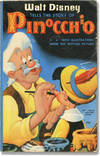
Isotopes.
by ASTON, Francis William (1877-1945)
- Used
- Hardcover
- first
- Condition
- See description
- Seller
-
Montreux, Switzerland
Payment Methods Accepted
About This Item
London:: Edward Arnold, 1922., 1922. 8vo. viii, 152 pp. 4 plates, 21 figs. or tables, index. Original navy blue blind- and gilt-stamped cloth. Very good+. Printing and the Mind of Man, 412. First edition. "Aston's invention of the mass spectrograph, an instrument giving a concentrated and extremely detailed breakdown of the constituents of analyzed material, enabled him to discover that elements are composed of atoms of varying mass, and that the atomic weight of an element is an average of the atoms comprising it. Aston used the word "isotopes" to describe atoms of differing weights within the same element, a term first coined by Frederick Soddy to describe separate elements that are nevertheless homogeneous in chemical behavior." :: Norman. Aston won the Nobel Prize for Chemistry in 1922. NOBEL-PRIZE: "At the end of 1909 he accepted the invitation of Sir J.J. Thomson to work as his assistant at the Cavendish Laboratory, Cambridge, on studies of positive rays. It was during this period that he obtained definite evidence for the existence of two isotopes of the inert gas neon." "This research was interrupted by the War of 1914-1918, during which time Aston worked at the Royal Aircraft Establishment, Farnborough, where he studied the effect of atmospheric conditions on aeroplane fabrics and dopes (i.e. synthetic coatings)." "Returning to the Cavendish Laboratory in 1919, he again attacked the problem of the separation of the isotopes of neon. He quickly achieved success in this by his invention of the mass spectrograph, an apparatus in which the ingenious use of electromagnetic focusing enabled him to utilize the very slight differences in mass of the two isotopes to effect their separation. Extending this principle to other chemical elements, he discovered, in a series of measurements, no less than 212 of the naturally occurring isotopes. From the results of this work he was able to formulate the so-called Whole Number Rule which states that, the mass of the oxygen isotope being defined, all the other isotopes have masses that are very nearly whole numbers." "Aston continued to make measurements, using an improved instrument, with ever-increasing refinement and precision. He observed and was able to measure those deviations from the Whole Number Rule which were to become so important in the field of atomic energy." "The results of his work were published in the Proceedings of the Royal Society and in the Philosophical Magazine. He was also the author of the books Isotopes (1922; revised edition 1941) and of Structural Units of the Material Universe (1923)." :: NobelPrize. DSB, I, pp. 320-22; Haskell Norman 77; Printing and the Mind of Man, 412.
Reviews
(Log in or Create an Account first!)
Details
- Bookseller
- Jeff Weber Rare Books
(CH)
- Bookseller's Inventory #
- S13215
- Title
- Isotopes.
- Author
- ASTON, Francis William (1877-1945)
- Book Condition
- Used
- Binding
- Hardcover
- Publisher
- Edward Arnold, 1922.
- Place of Publication
- London:
- Date Published
- 1922
- Keywords
- Physics
Terms of Sale
Jeff Weber Rare Books
30 day return guarantee, with full refund including shipping costs for up to 30 days after delivery if an item arrives misdescribed or damaged.
About the Seller
Jeff Weber Rare Books
Biblio member since 2006
Montreux
About Jeff Weber Rare Books
Visitors are welcome to the shop. Call ahead for an appointment if you wish to meet with me. On display are about 12,000 books.
Glossary
Some terminology that may be used in this description includes:
- First Edition
- In book collecting, the first edition is the earliest published form of a book. A book may have more than one first edition in...
- Cloth
- "Cloth-bound" generally refers to a hardcover book with cloth covering the outside of the book covers. The cloth is stretched...
- Good+
- A term used to denote a condition a slight grade better than Good.




